I love Scotland and I love puffins. Seeing the puffins in Scotland was genuinely a no-brainer decision for me on my most recent trip. The Scottish Isles, particularly the Inner Hebrides, don’t get enough love outside of the Isle of Skye and are home to both stunning backdrops and incredible wildlife. The puffins are no small squad either; Scotland is home to thousands of them each year during the puffin breeding season.
[convertkit form=6770429]
Seeing puffins is a must for wildlife enthusiasts and tourists alike. First off, these birds are fabulous to look at with their black and white body and brightly colored beaks. They’re not just cute; they’ve also got personality for days. I found them goofy and fun to watch compared to many other bird species. And in Scotland, you can get up close and personal with the cheeky birds with stunning coastal views as the backdrop.
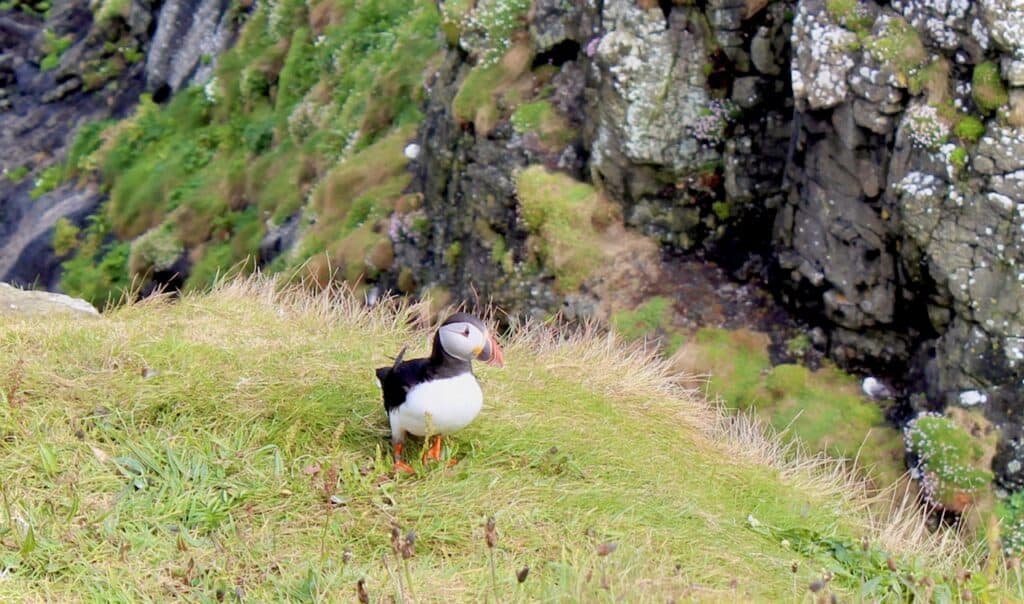
Puffins are deeply embedded in Scottish folklore and cultural heritage. They are featured in local myths and stories, often symbolizing resilience and adaptability. Historically (and a bit tragically IMO), puffins were also a vital food source for coastal communities, highlighting their role in traditional Scottish lifestyles.
Here’s the tl;dr: head to Scotland in the summer months for your best chance to experience seeing the birds up close. The Inner Hebrides will be the easiest place to see them, but if you’re in Shetland or in the northern part of Scotland, you have options there as well.
Disclosure: This post may contain affiliate links. If you make a purchase through these links, we may earn a commission at no extra cost to you.
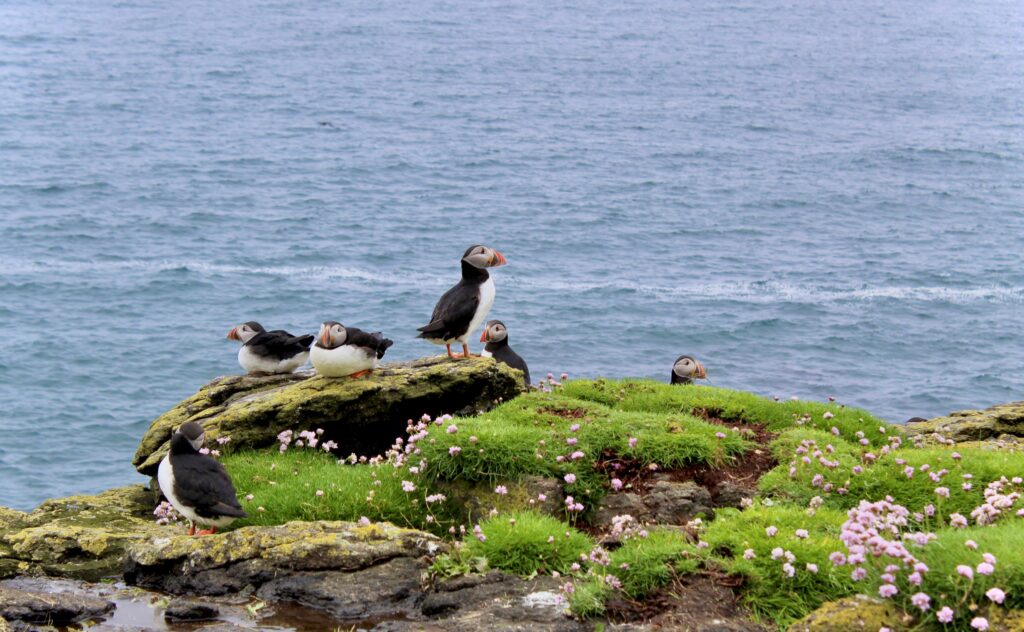
Best Time to See Puffins in Scotland
The best time to see these birds in Scotland is typically from mid-April to mid-August. During this period, puffins return to their breeding colonies. The exact timing can vary slightly depending on weather conditions and the specific location, so April and August aren’t guarantees, but visiting during the early summer months will generally give you the best chance to observe the puffins.
In my Best Month to Visit Scotland post, I explain all of the reasons why I think May is one of the ultimate months to plan your trip, including for these adorable birds.
Where Can I see Puffins in Scotland?
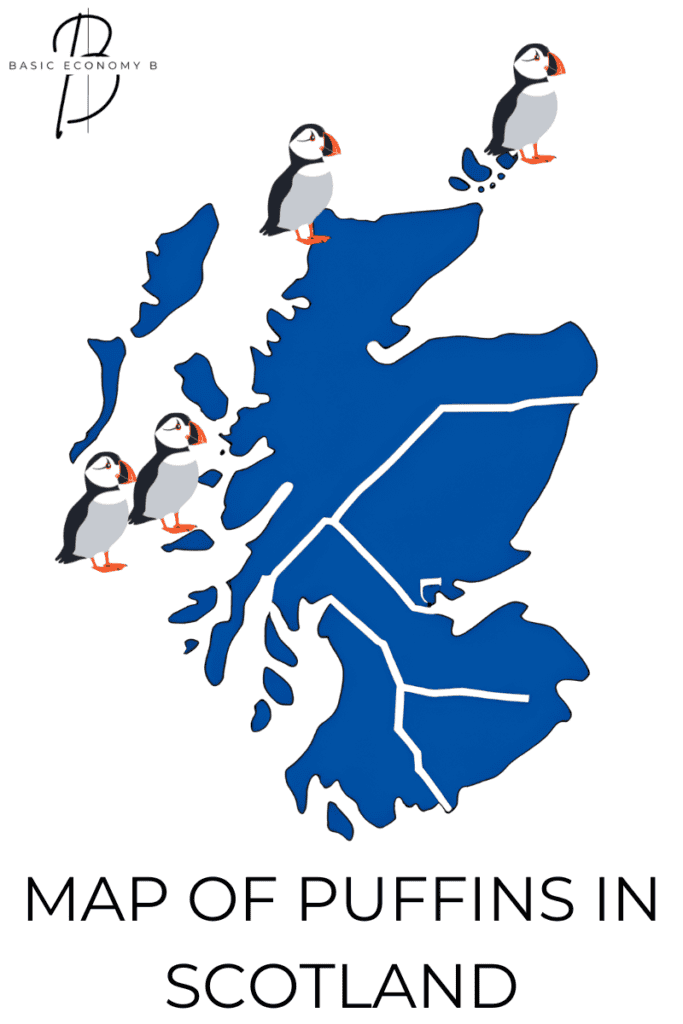
Isle of Lunga
The largest of the Treshnish Isles off the west coast of Scotland, the Isle of Lunga is the place to see these precious birds. It is a small, uninhabited island in the Inner Hebrides. More precisely, Lunga is located approximately 2.2 miles west of the Isle of Mull.
Lunga is one of the best places I’ve ever observed wildlife in the world, including my African safari. If your tour is going to the Isle of Lunga, you can observe puffins at close range thanks to carefully maintained paths and viewing areas. This accessibility, coupled with the sheer abundance of puffins makes Lunga a photographer’s paradise, even for novices like myself (okay even novice is generous).

My tour to see the puffins went to the Isle of Lunga on an overcast day in early June, and that day still remains one of my favorite travel days to date. I got multiple hours to spend nestled up right with the puffins and watch them live their lives. Being in such a remote area in Scotland with views of the surrounding sea and isles was one thing, but getting to be so close to the unbothered and unapologetically adorable birds was genuinely so cool.
Lunga has not been inhabited since the late 1800s, but prior to then, it was likely inhabited for over 1000 years since the age of the Vikings. You can actually see the ruins of a village from the cliffs and you really feel up close and personal to Scottish history.
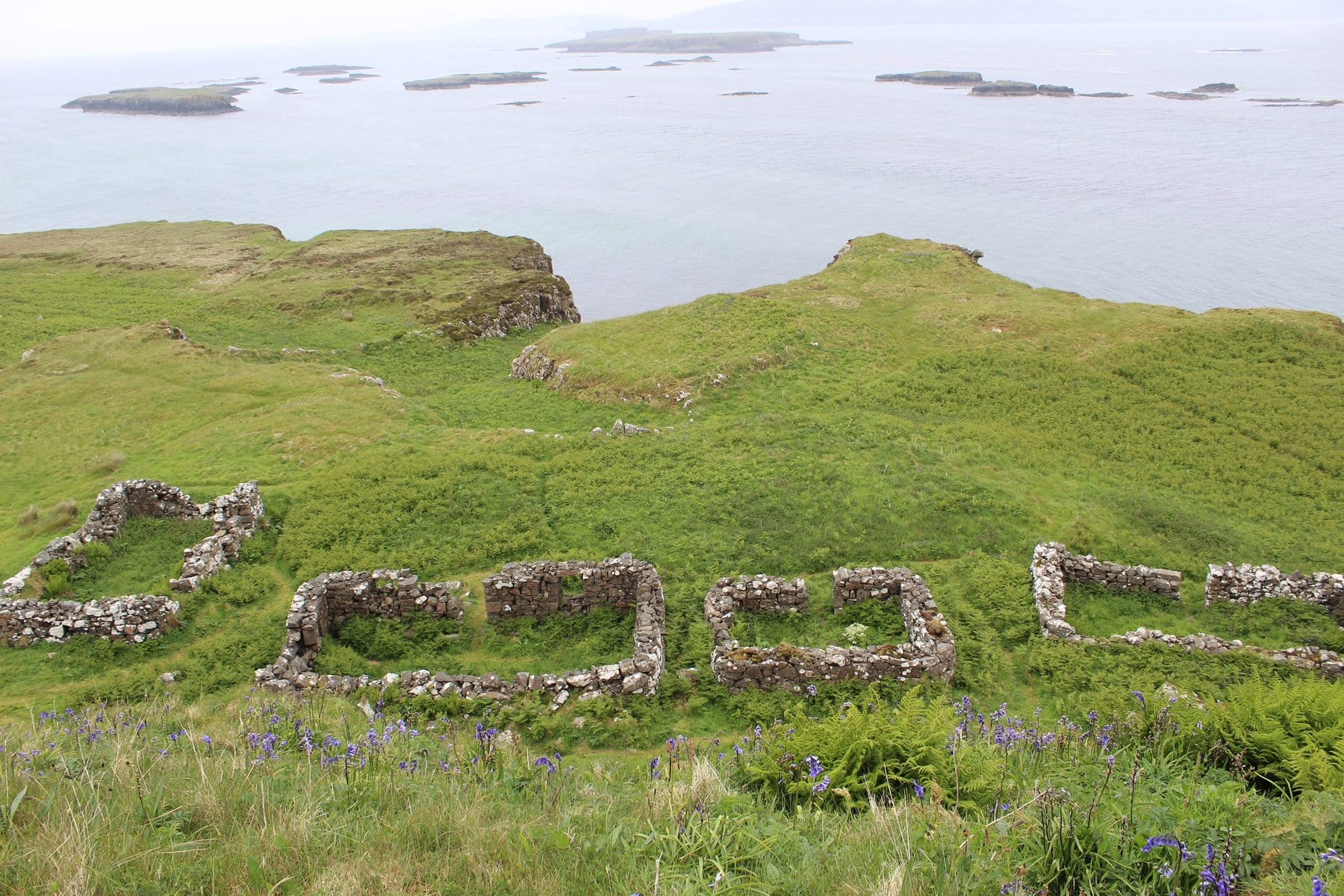
A few other tour boats arrived while we were there, but the paths went on for a decent length, so it never felt overcrowded. I was really able to enjoy the remoteness of the location, something that isn’t always easy to do given Scotland’s popularity with tourists in the summer months.
As you’re traveling between islands in the Treshnish Isles, keep a lookout for wildlife in the sea. The marine environment is part of the Seas of Hebrides Marine Protected Area due to the presence of minke whales and basking sharks. It’s also likely you’ll see either bottlenose or common dolphins or gray seals in the area.
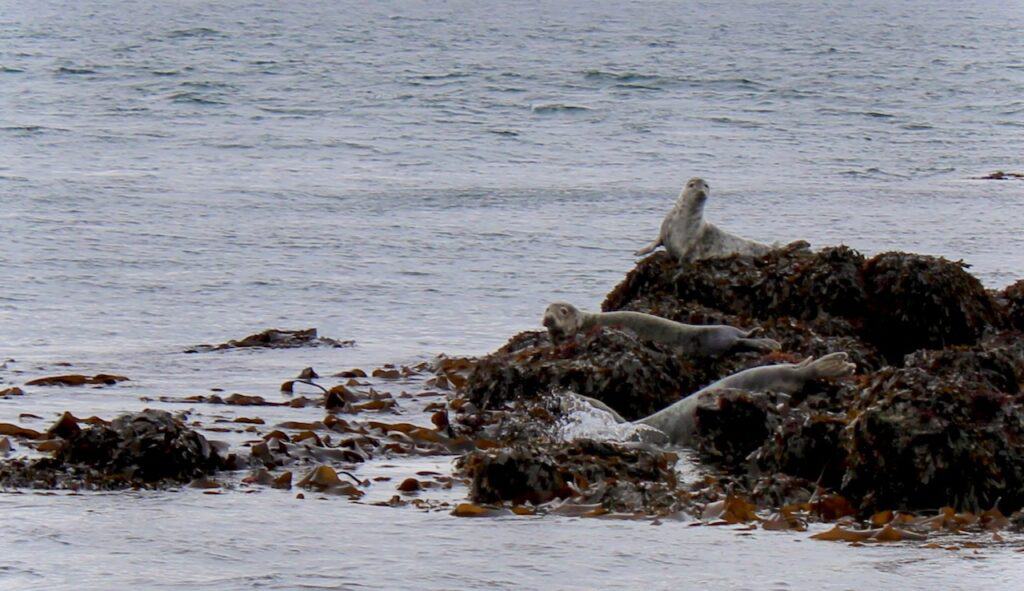
Isle of Staffa
The Isle of Staffa lies about 6 miles west of the Isle of Mull and 30 miles west of Oban in the Inner Hebrides. Staffa is a small, uninhabited island that is renowned for its unique geological formations, particularly Fingal’s Cave, and its rich birdlife. Staffa is part of the National Nature Reserves, along with nearby islands such as Iona and the Treshnish Isles.
Staffa plays host to a significant Atlantic puffin colony during their breeding season. Puffins on Staffa nest in burrows on the grassy slopes of the island, away from the cliffs where seabirds like fulmars and guillemots typically nest. Much to my delight, they are actually quite active during the day.

Fingal’s Cave is pretty spectacular and is the reason most tours stop here versus the actual puffins. You can see towering hexagonal columns from the water, and it feels like something straight out of a fantasy series where you are entering a mythical underworld where giants once roamed. Inside the actual cave, waves crash against the walls and make a unique melody. Even if you’re just trying to see the puffins, the cave is a great addition to most trips.
When I visited, the waves were too intense for the boat to land on the shores of Staffa, so we just appreciated the geology from afar. Since we were able to see so many puffins on Lunga, this wasn’t a big issue.

Sumburgh Head, Shetland
Sumburgh Head, located at the southern tip of the Shetland mainland in Scotland, is another destination renowned for its significant seabird populations, including puffins. Sumburgh Head juts out into the North Sea and offers a stunning view of the surrounding waters and puffin nesting sites.
Much like Lunga, well maintained paths will allow you to view puffins up close as they go about their daily lives during the summer breeding months. So you’ll be able to watch their fishing excursions and see them feed their bounty of eels and small fish to their chicks waiting in the nests.
Unless you have your heart set on visiting Shetland, Lunga will be much (and I mean MUCH) easier to get to than Sumburgh Head. To get to Shetland from Glasgow, you have to take a flight that is likely to be pretty pricey. Or you can take a nearly 3 hour train to Aberdeen from Glasgow and then a 12 hour ferry to Shetland. Yes. 12 hours.
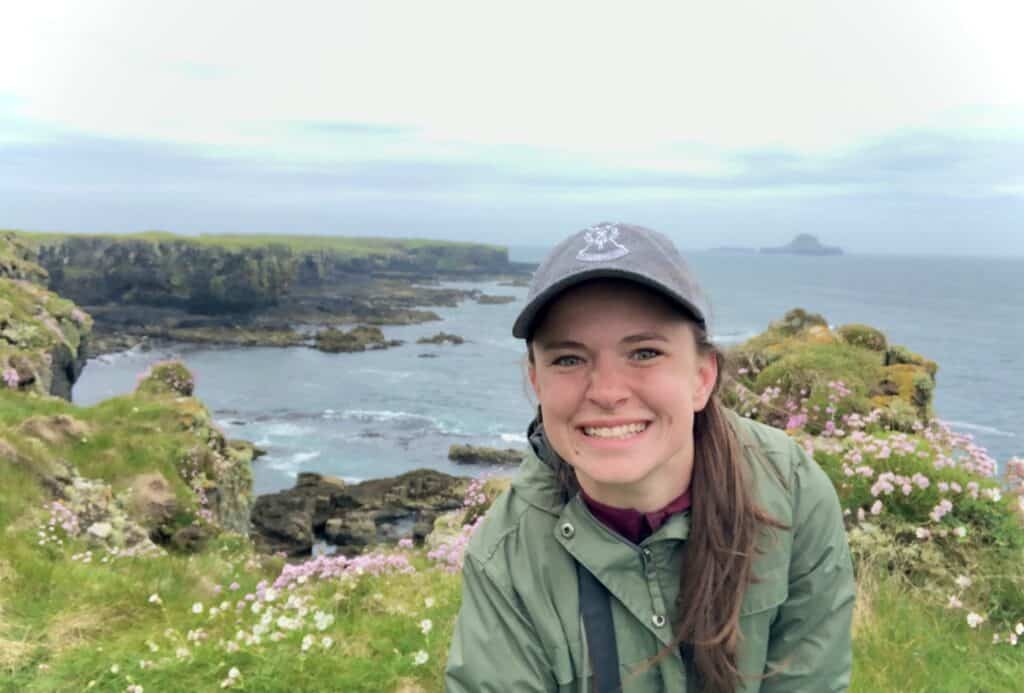
Handa Island, Sutherland
Handa Island is situated in the far northwest of Scotland, off the coast of Sutherland. It is part of the Assynt-Coigach National Scenic Area. Access to Handa Island is via a short boat trip from Tarbet, a small village on the mainland.
Species commonly found on Handa include puffins, guillemots, razorbills, fulmars, kittiwakes, and various gulls. The island offers designated walking paths and viewing points that let you observe puffins and other seabirds up close without disturbing their natural behaviors. The island’s remote location allows the puffins and other birds to absolutely thrive without human interference.
Pros of Handa: you can DIY your trip, as the ferry from Tarbet to Handa runs multiple times a day and allows you to control the times and durations you’re viewing the puffins, versus on an organized tour where someone else is keeping you on a schedule.
Cons of Handa: reaching Tarbet in Sutherland is about a 5 hour drive from Glasgow with no great public transit options to get there easily. Be careful in your searching on Google as there’s a Tarbet station 90 minutes from Glasgow and that will lead you to Loch Lomond, which is charming, but notably not home to puffins.
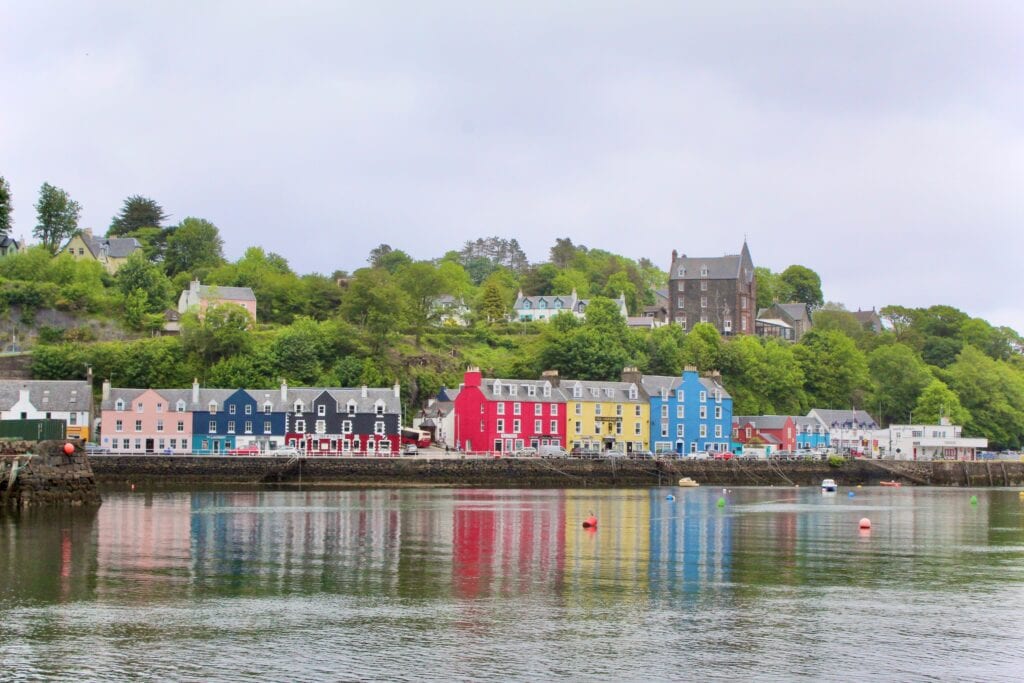
My Recommendation on Where to See Puffins in Scotland
Unless you have the time and energy to go to the remote edges of country, I would recommend seeing the puffins on the Isle of Lunga or Staffa. You have your pick of departing from the following destinations:
- Oban
- Tobermory on the Isle of Mull
- Both Oban and Isle of Mull make my Top 10 List of Places to Visit in Scotland and are well worth spending some time in.
- The Isle of Iona off the coast of Mull
- Read my full guide on the Isle of Iona. Spoiler alert: it’s one of the coolest places I’ve ever visited, proximity to puffins notwithstanding.
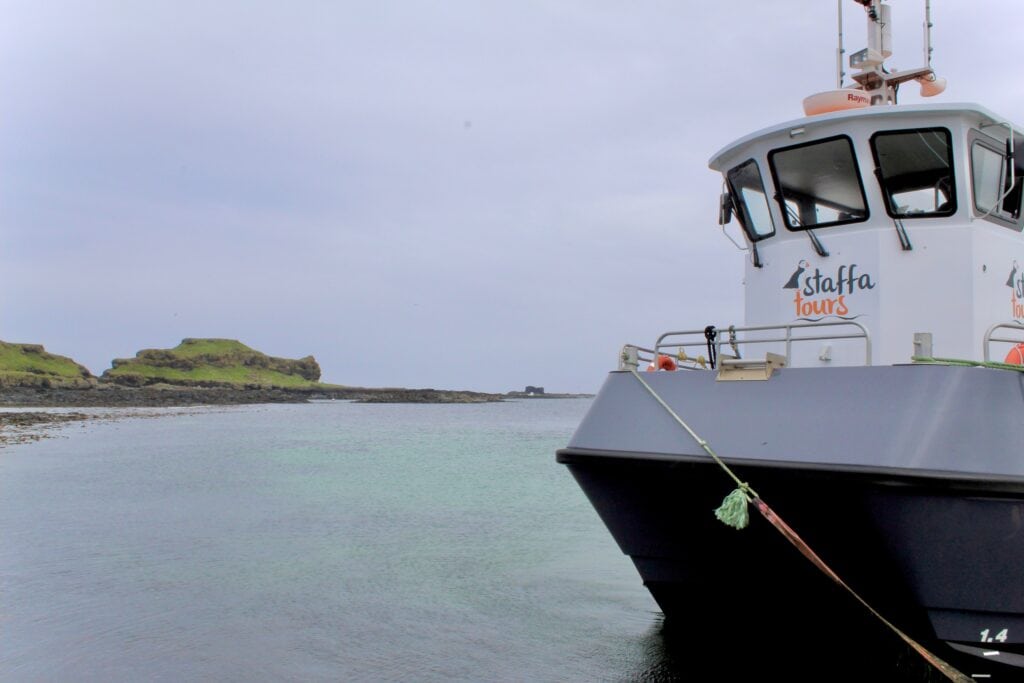
My Recommendation on Tours to Spot Puffins
Staffa Tours Scotland: this is the tour I went on and loved and personally recommend. My tour left from colorful Tobermory on the Isle of Mull and the crew was outstanding. The weather was too rough to sail on the original day I planned, and they were in communication to rebook me on a different day where we were able to see a lot of wildlife.
- They sail from Tobermory for an approximately 6 hour tour for £85.00.
- Or another of their boat trips picks up from Iona (or Fionnphort on Mull across from Iona) at £40 per person for an approximately 3 hour tour.
Staffa Trips: another tour option that picks up only from Iona (either the actual aisle or Fionnphor on mainland Mull). The cost is £40 per person. Tours leave twice a day and start at 9:45am or 1:45pm.
Turus Mara: This is a well-organized option for those staying in Oban. The day involves taking the 9:55am CalMac ferry from Oban to Mull before being transported to a separate boat to access the harder to reach isles where the puffins are found. You’ll return to Oban on the ferry by 8:15pm. Cost is £80.00.
Shetland Explorer: is a great tour option for those of you making the trek up to Shetland. This tour is a combo of Shetland ponies and puffins.
There is a tour out of Inverness that advertises that you can see puffins. I would steer clear of any tours out of Inverness or in the Highlands if you’re specifically wanting to see puffins because they have not been heavily seen in that area for years.

A couple of tips on being a responsible observer of the puffins:
- Those paths and signs aren’t just for show—they’re there to keep you and the puffins safe and fabulous. Don’t go off-road; we’re all about preserving that pristine puffin paradise.
- When you’re snapping those pics of our feathered friends, keep a respectful distance. Both puffins and Basic Economy Bs need their personal space.
- I was able to eat my packed lunch on Lunga near the puffins, and if you’re on a tour with a similar schedule, you might too. Please don’t even think about offering them snacks from your picnic, it’s harmful to wildlife.
- Lastly, if the signs say no drones, then definitely no drones. Keep the skies clear for the real stars of the show.
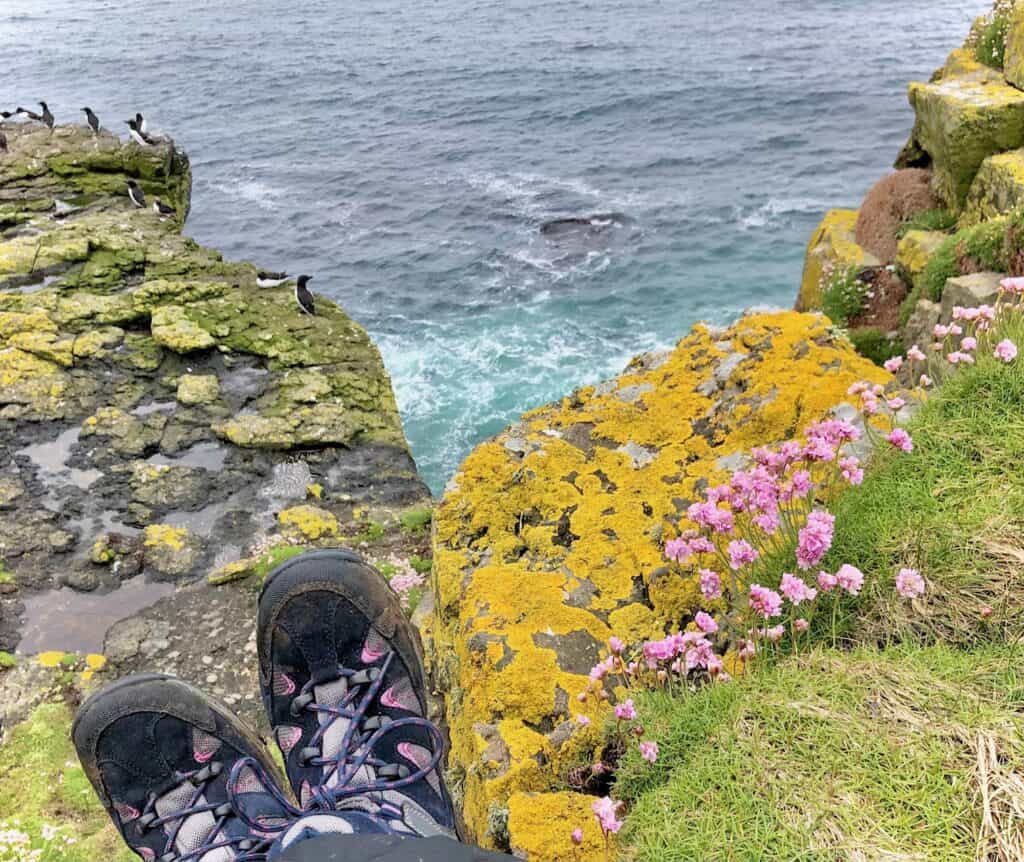
What to Pack to See the Puffins:
Sturdy Footwear: Those cliffs and coastal paths can be as rugged as the Highlands so bring along some sturdy, comfortable shoes. These hiking boots (pictured above) are my favorite entry-level boots for people looking for waterproof shoes with ankle support but don’t want to spend hundreds of dollars.
Weather-Ready Attire: Scotland’s weather is as unpredictable as a puffin’s fishing habits, so layer up! As I mention in my guide to packing for Scotland, pack a waterproof jacket, no ifs ands or buts. I’d also recommend packing a waterproof beanie, as that salty air can get cold when you’re traveling across the sea on the boat.
Snacks and Hydration: Wildlife tours can really take a lot out of you. Pack some snacks and a water bottle into your bag. Trust me, you’ll need the energy to keep up with those cutie birds.

To sum up: experiencing puffins in Scotland is more than just seeing an adorable bird in the wild; it’s about connecting with Scotland and the rich heritage and geographical wonders of Scotland’s outreaches. Whether you’re exploring the Inner Hebrides or heading to the remote reaches of Shetland, tread lightly and respect the puffins’ habitats. With advance planning and a spirit of adventure, your puffin-watching journey promises to be nothing short of spectacular.

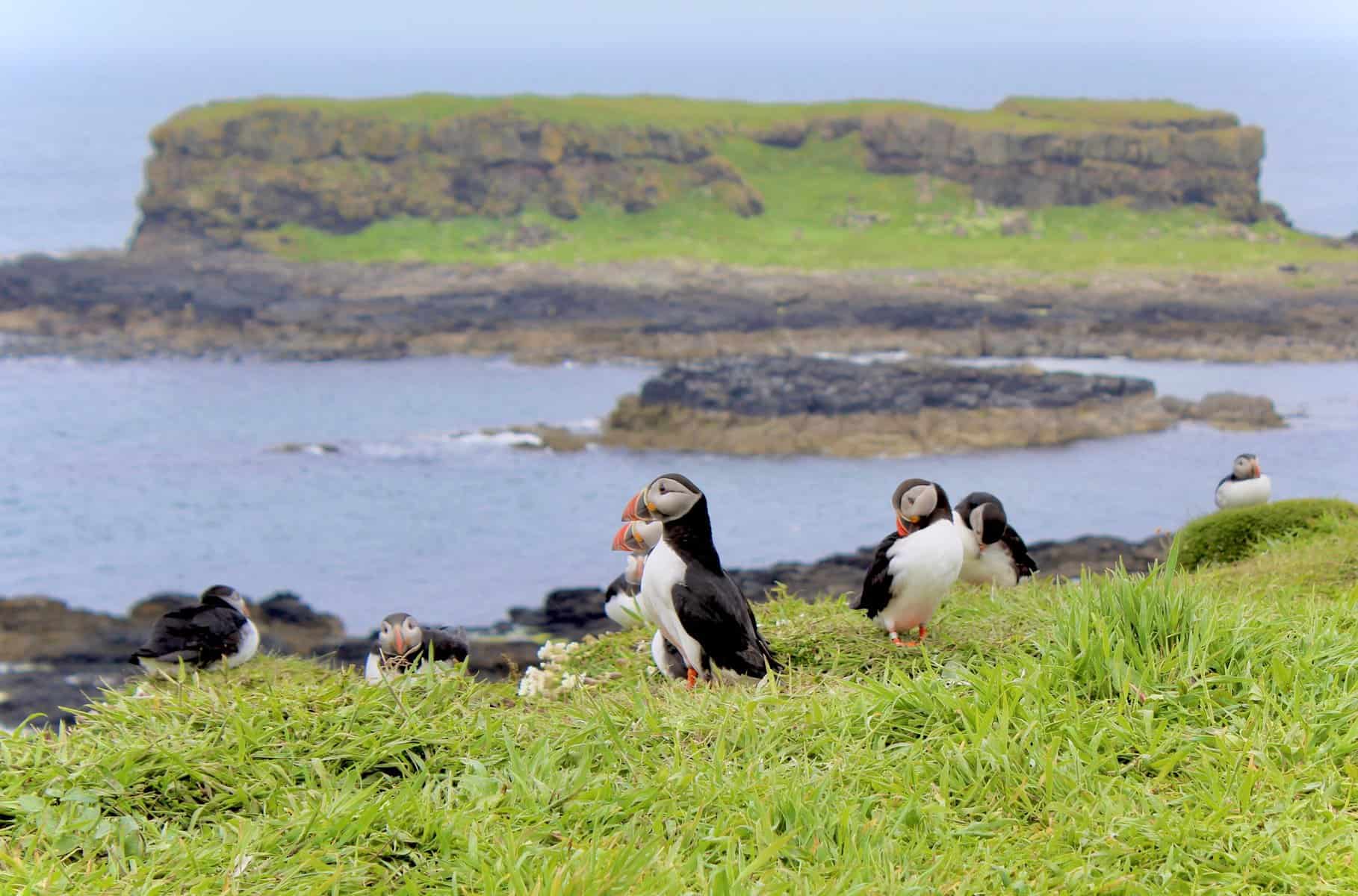
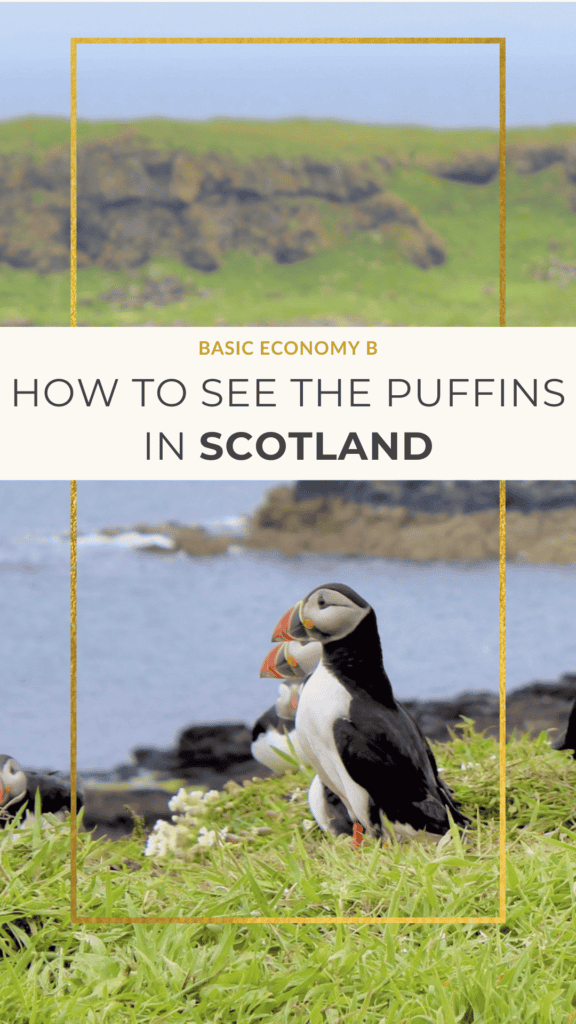
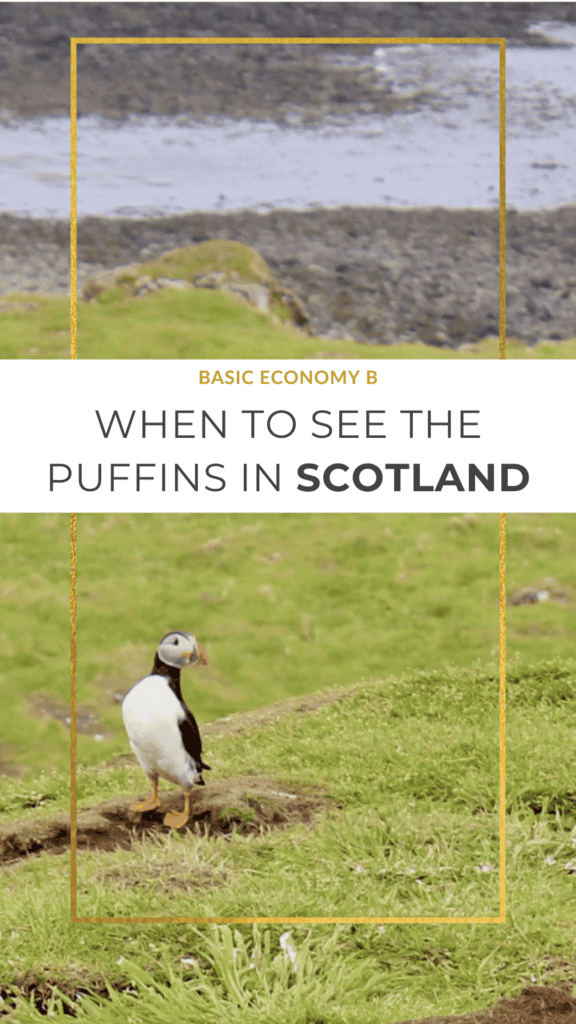

Leave a Reply